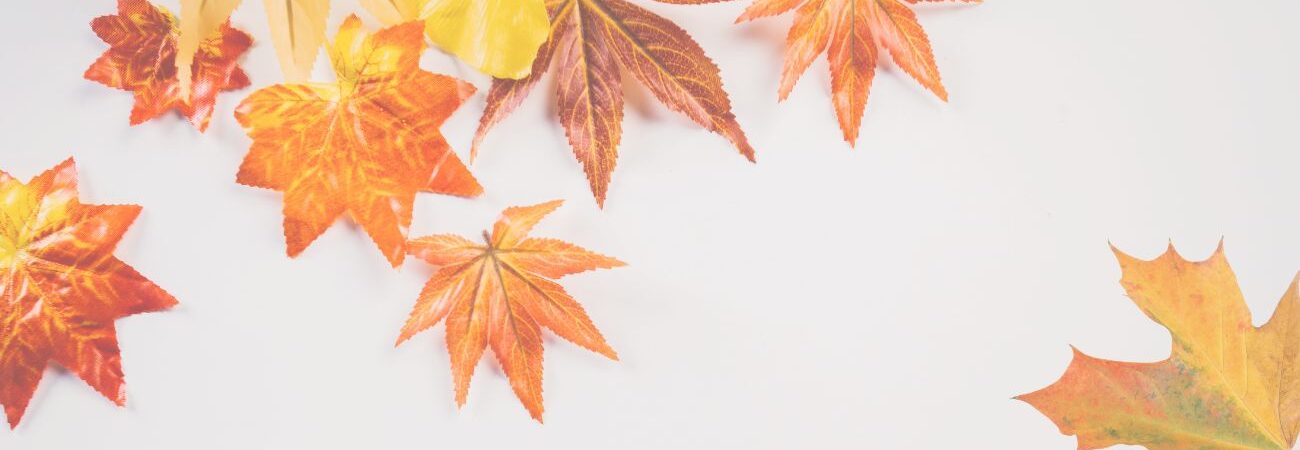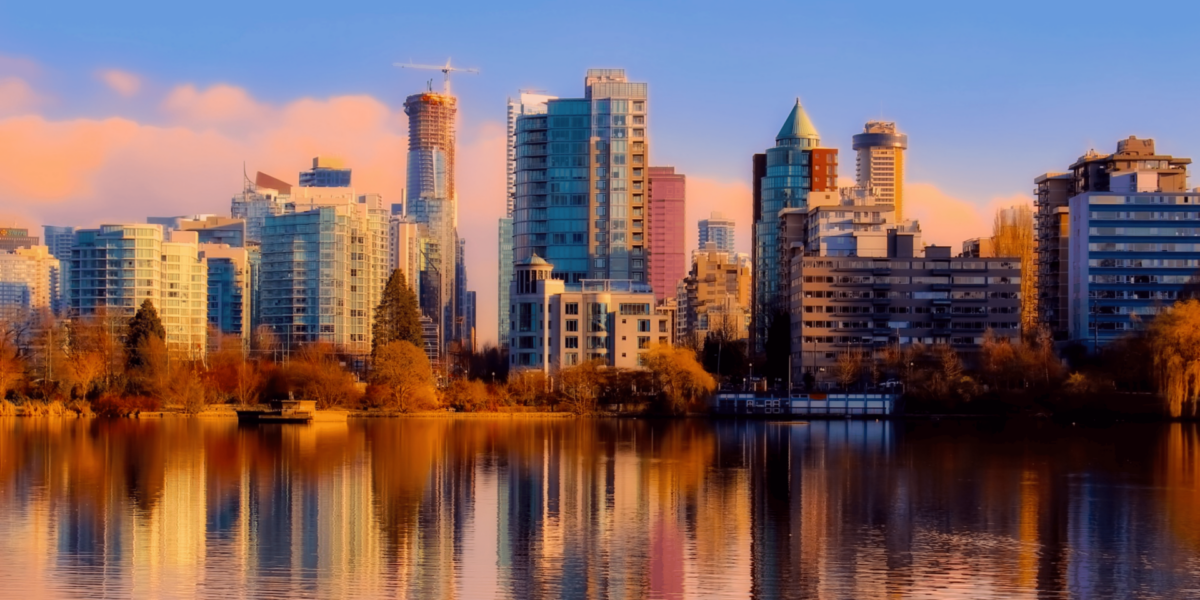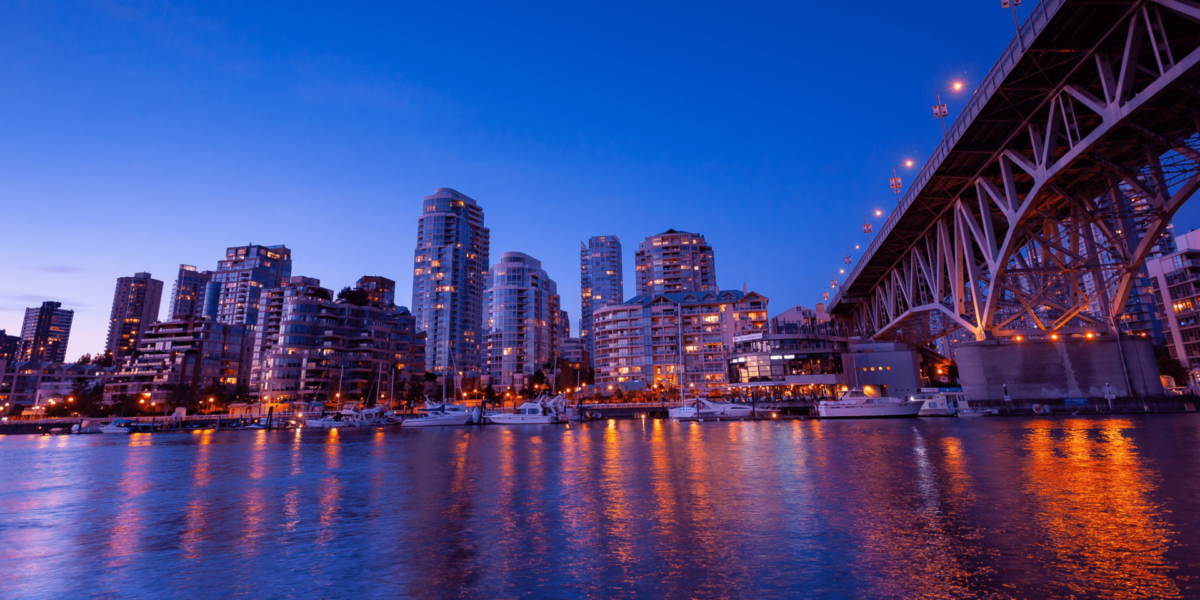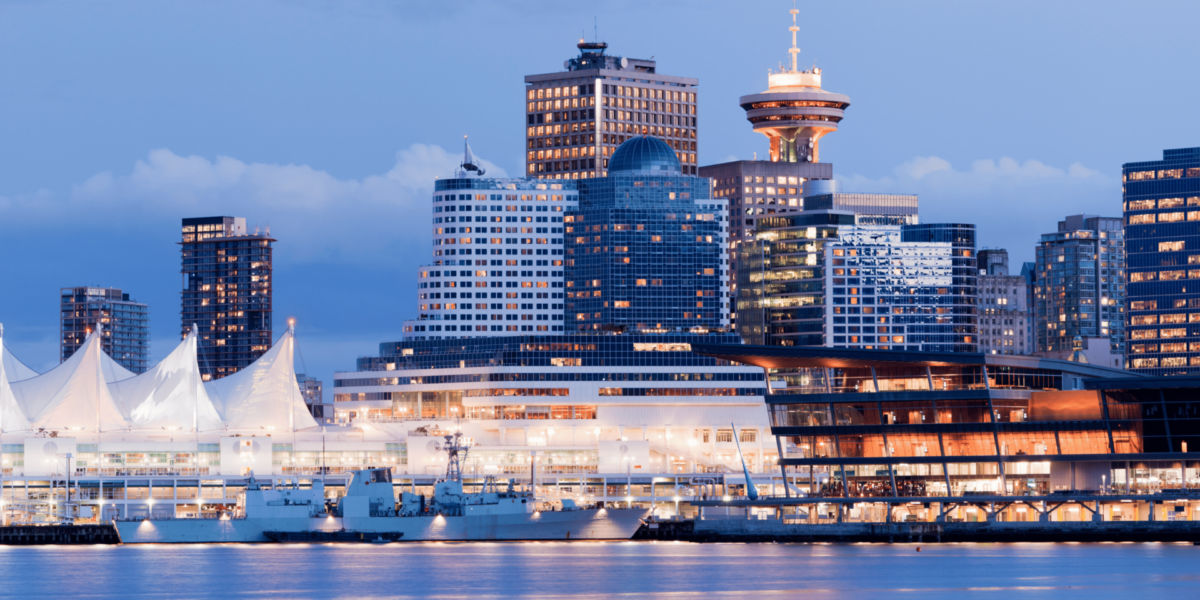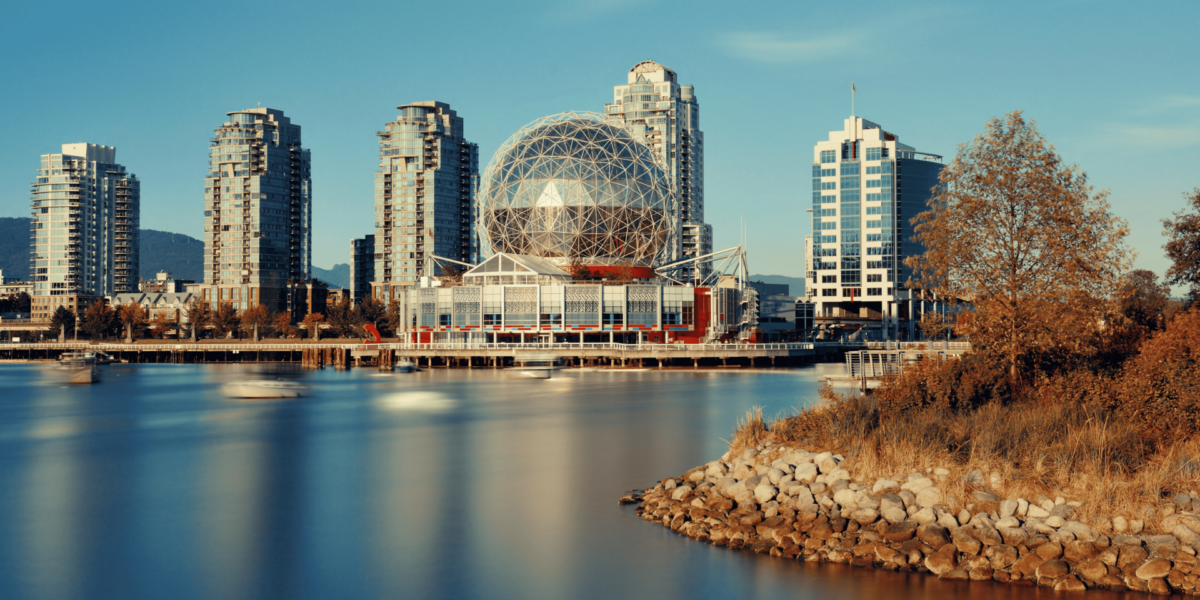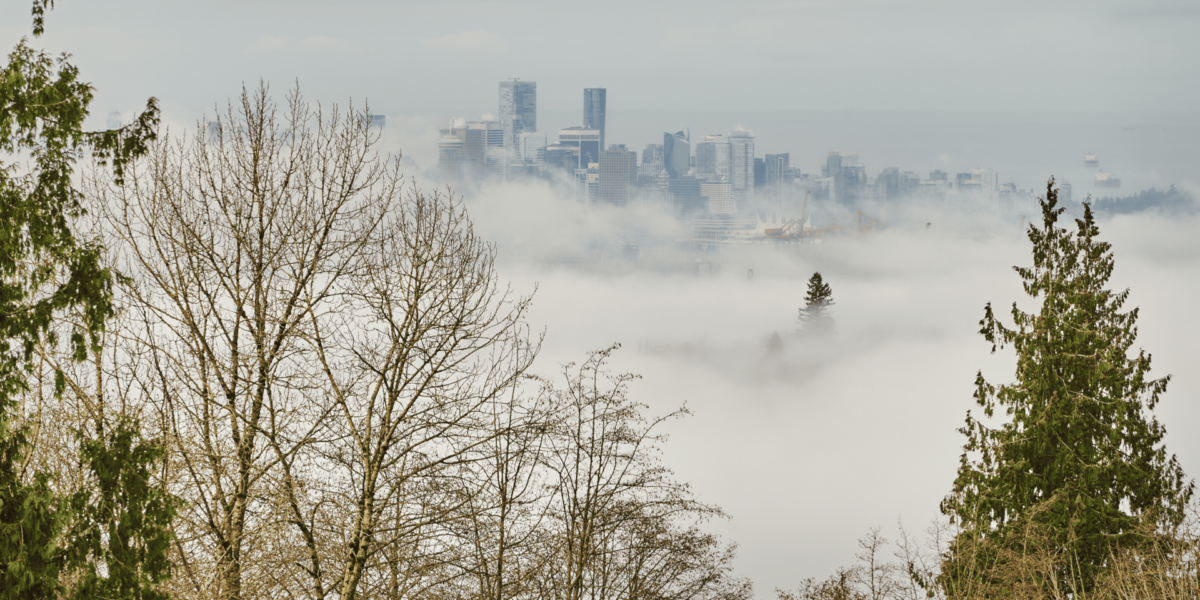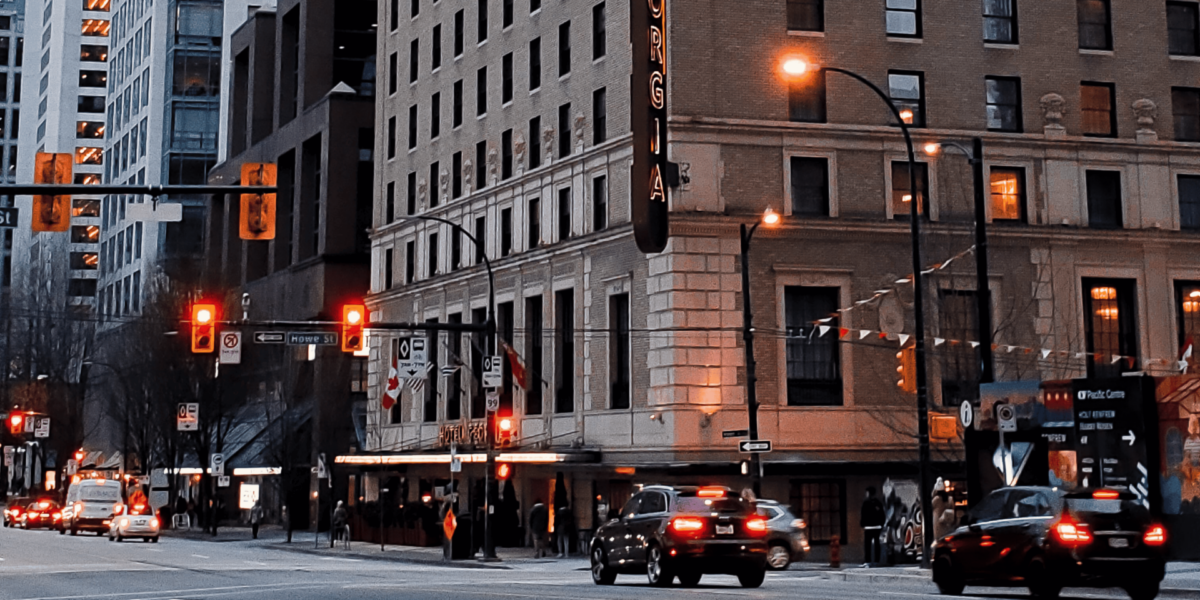Vancouver’s skyline reflects more than just light—it captures the city’s unique blend of nature and design. When sunlight or overcast skies hit the city’s tall glass buildings, they mirror the North Shore Mountains, creating stunning visuals. These reflections turn urban surfaces into live paintings, drawing photographers and travelers alike.
How Glass Towers Frame the Mountains
Vancouver’s downtown core features sleek, glass-covered skyscrapers that stand in direct view of the Coast Mountains. This rare alignment means many high-rise buildings catch natural scenery in their mirrored surfaces. The result is a living contrast—steel and glass reflecting rugged peaks and forested slopes.
From street level, you might see a mountain peak duplicated in a tower’s full-length window. Wind moves clouds across the glass, changing the look minute by minute. You don’t need a rooftop view to witness it. Even walking through Coal Harbour or along Georgia Street gives you a clear look at this blend of architecture and landscape.
Why Vancouver’s Skyline Is Ideal for Reflection Photography
Unlike many cities where skyscrapers compete with each other, Vancouver’s building codes protect mountain sightlines. This ensures that key natural features always remain visible. The abundance of glass façades creates a perfect canvas for reflections, especially during early morning and late afternoon light.
In a quiet moment just after sunrise, a photographer might frame a building’s mirrored surface as it catches the snowy ridges of Grouse Mountain. The reflection appears sharp and still, until a bird passes across the glass, shifting the moment into something more dynamic. This kind of visual storytelling is only possible in cities like Vancouver where the natural and urban worlds overlap.
Finding the Best Time of Day for Skyscraper Reflections
Lighting plays a key role in capturing strong reflections. In Vancouver, late fall and early spring often offer the best conditions. These seasons provide a mix of low-angle light and frequent cloud cover, which enhances contrast and reflection sharpness.
On a cloudy day, the absence of direct sun reduces glare. The light becomes soft and even, allowing both buildings and reflected mountains to appear balanced in photos. In the late afternoon, as the sun begins to dip, golden tones spread across the glass surfaces, warming the color of the entire scene.
Using Natural Framing to Enhance City Reflection Photos
Framing helps isolate reflections within the broader urban environment. In Vancouver, elements like bridges, tree branches, and building overhangs can help shape your composition. These framing tools guide the viewer’s eye toward the reflected mountains, adding structure to your shot.
Imagine standing near Burrard Inlet while a tree branch drapes into the top corner of your frame. Below, a high-rise captures the jagged lines of Mount Seymour in crystal clarity. The natural frame and mirrored mountain align to create balance and context without the need for heavy editing or artificial staging.
How Weather Shapes the Skyscraper Reflections
Weather influences both the mood and clarity of reflections. Vancouver’s varied climate makes the city especially photogenic throughout the year. Clear days produce sharp, mirror-like reflections, while light rain or fog softens the lines, giving a more abstract feel.
A sudden shift in weather—like a break in rain just as the sun pushes through—can dramatically change how reflections appear. A building that looked flat moments ago lights up with new colors and patterns. These small shifts offer chances to catch something rare and striking without needing special equipment.
Selecting the Right Gear for Reflective Photography
To photograph reflections in skyscrapers, use gear that allows you to control light and clarity. A wide-angle lens helps capture the full scope of both building and mountain in one frame. A polarizing filter can reduce unwanted glare and deepen the sky’s tone in your reflection.
You don’t need the most expensive setup. Even mid-range cameras can capture clean, detailed shots in Vancouver’s daylight. Keep a lens cloth on hand—the coastal air often leaves light moisture on your gear, especially near the waterfront.
Composing Strong Visual Stories With Reflections
When shooting reflections, it’s important to build a narrative into your frame. Look for elements that suggest movement or change—clouds, shadows, passing people. A reflection should not just replicate what’s behind you; it should tell a story about what the city feels like in that moment.
In a quiet morning on West Georgia Street, a single commuter walks past a glass façade. Behind them, the mountains rise clearly in the building’s surface. This small intersection of daily life and natural beauty offers a strong story that words alone can’t capture.
Editing Photos to Enhance Mountain Reflections in Glass
Post-processing should improve your image without overdoing it. Start with contrast and exposure to balance the brightness of the building with the darker tones of the mountains. Adjust highlights to prevent the glass from blowing out under direct light.
Slight color grading can help emphasize mood. Cool tones work well with early morning light, while warmer edits suit late-day shots. Don’t over-sharpen—the mist and fine textures of mountain reflections need softness to keep their natural feel. Always aim to preserve the original tone of the moment you captured.
Staying Safe While Photographing in the City
City photography, even in scenic areas, requires awareness. When shooting in busy districts like Yaletown or downtown Vancouver, be mindful of traffic, pedestrian flow, and private property. Use sidewalks, public plazas, or waterfront areas where photography is welcome and safe.
If you’re using a tripod, avoid placing it in high-traffic zones. Always carry your gear securely, especially when moving between locations on foot or by transit. A lightweight backpack and simple camera sling allow mobility while protecting your equipment from bumps and weather.
Why Reflections Make Vancouver’s Skyscrapers Unforgettable
Vancouver’s skyline doesn’t just rise—it reflects. The city’s use of glass and its protected views of the surrounding mountains create a one-of-a-kind experience. Every day brings a new combination of weather, light, and shape that changes the visual story told by each building.
Photographers and visual storytellers keep returning to this landscape because it rewards attention to detail. You don’t have to wait for perfect weather or rare events. The city’s everyday rhythm—its light shifts, cloud cover, and mountain presence—offers all the raw material you need to create something memorable.
